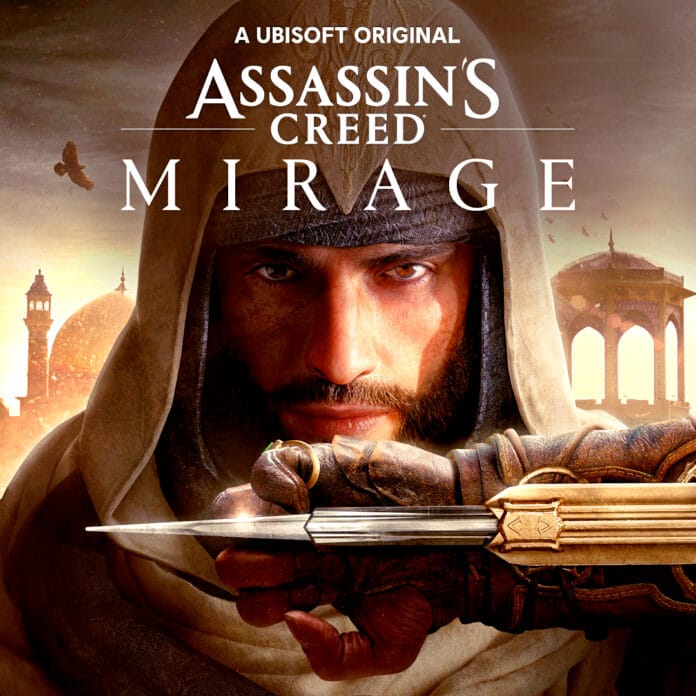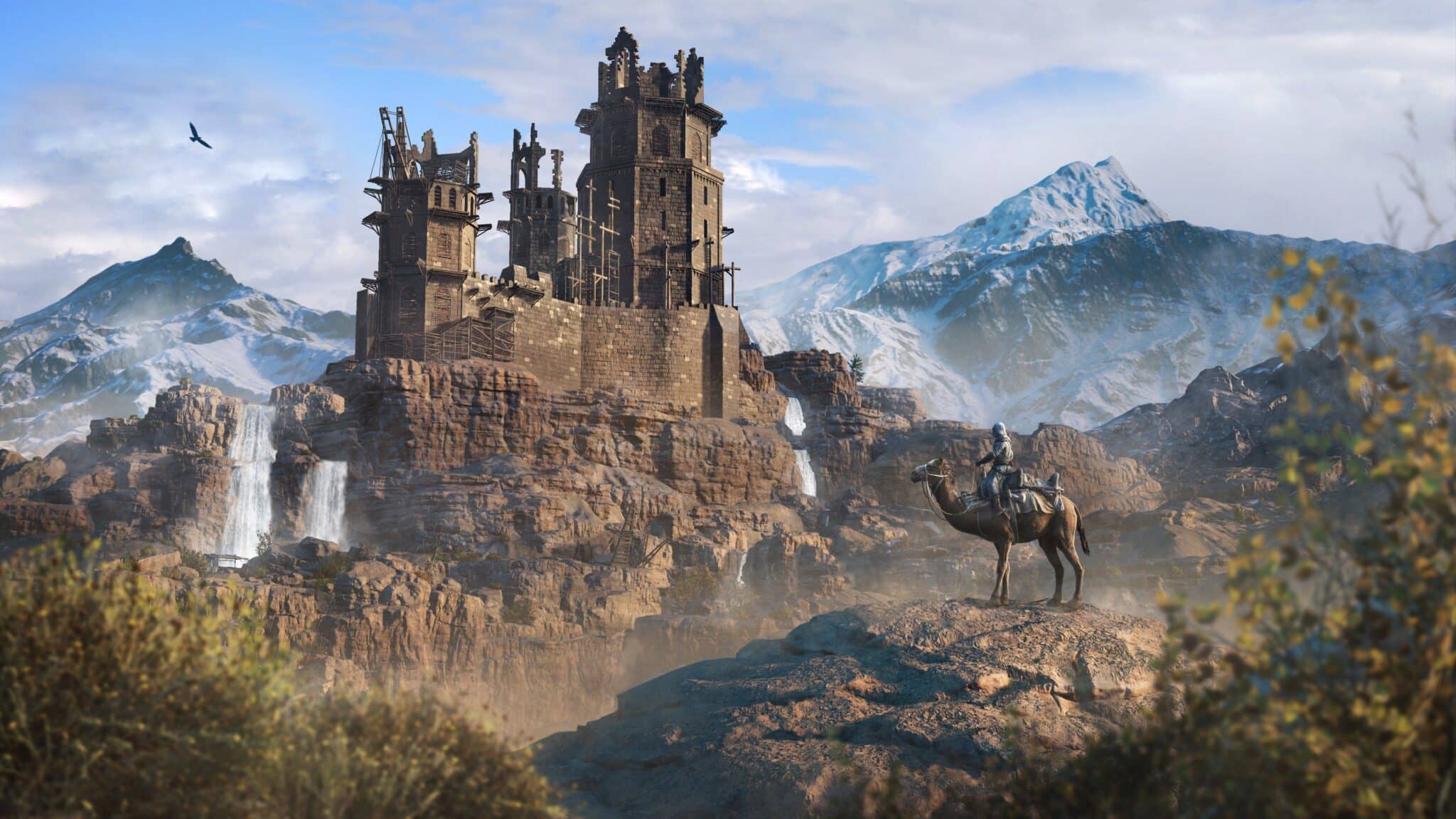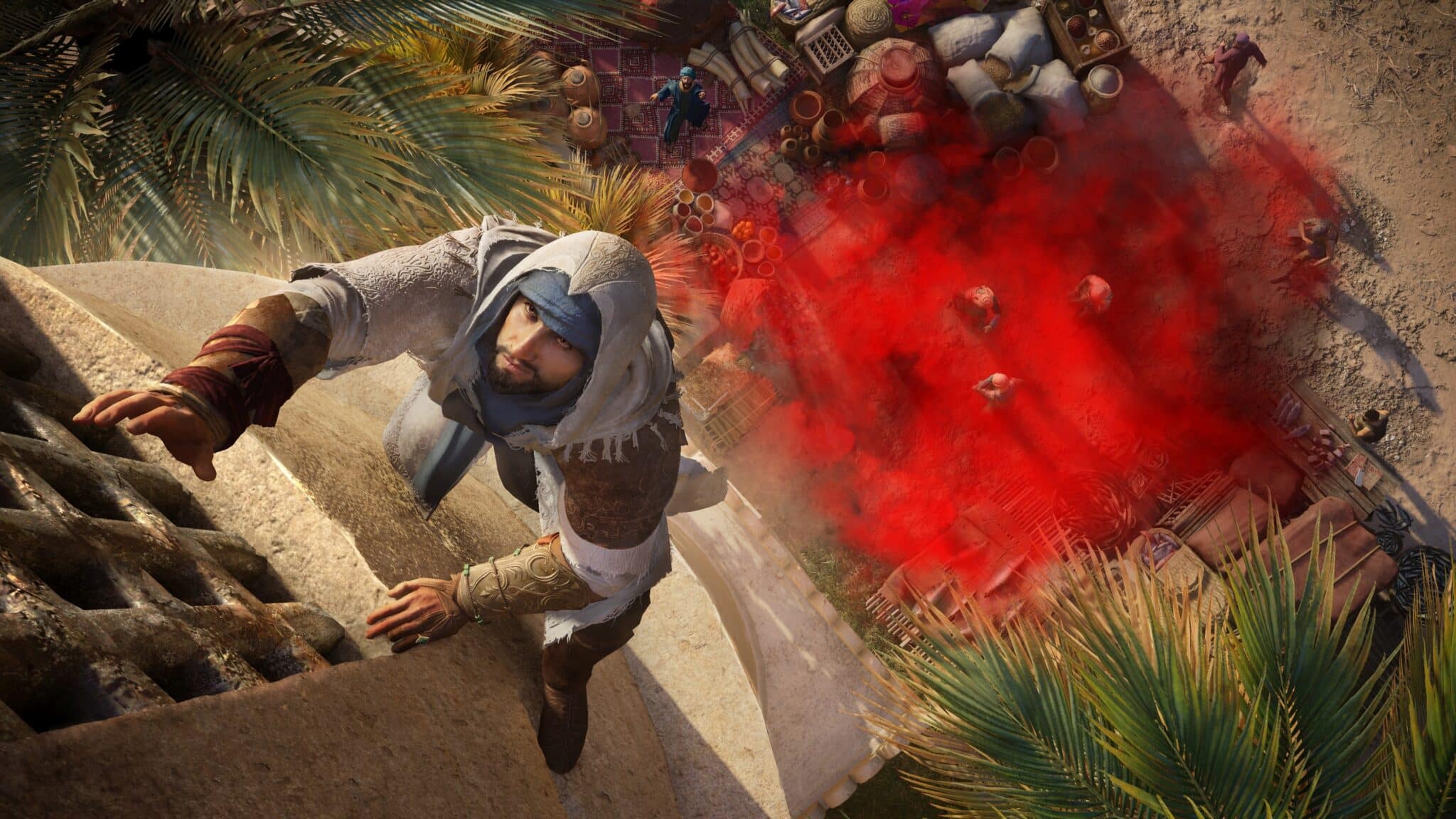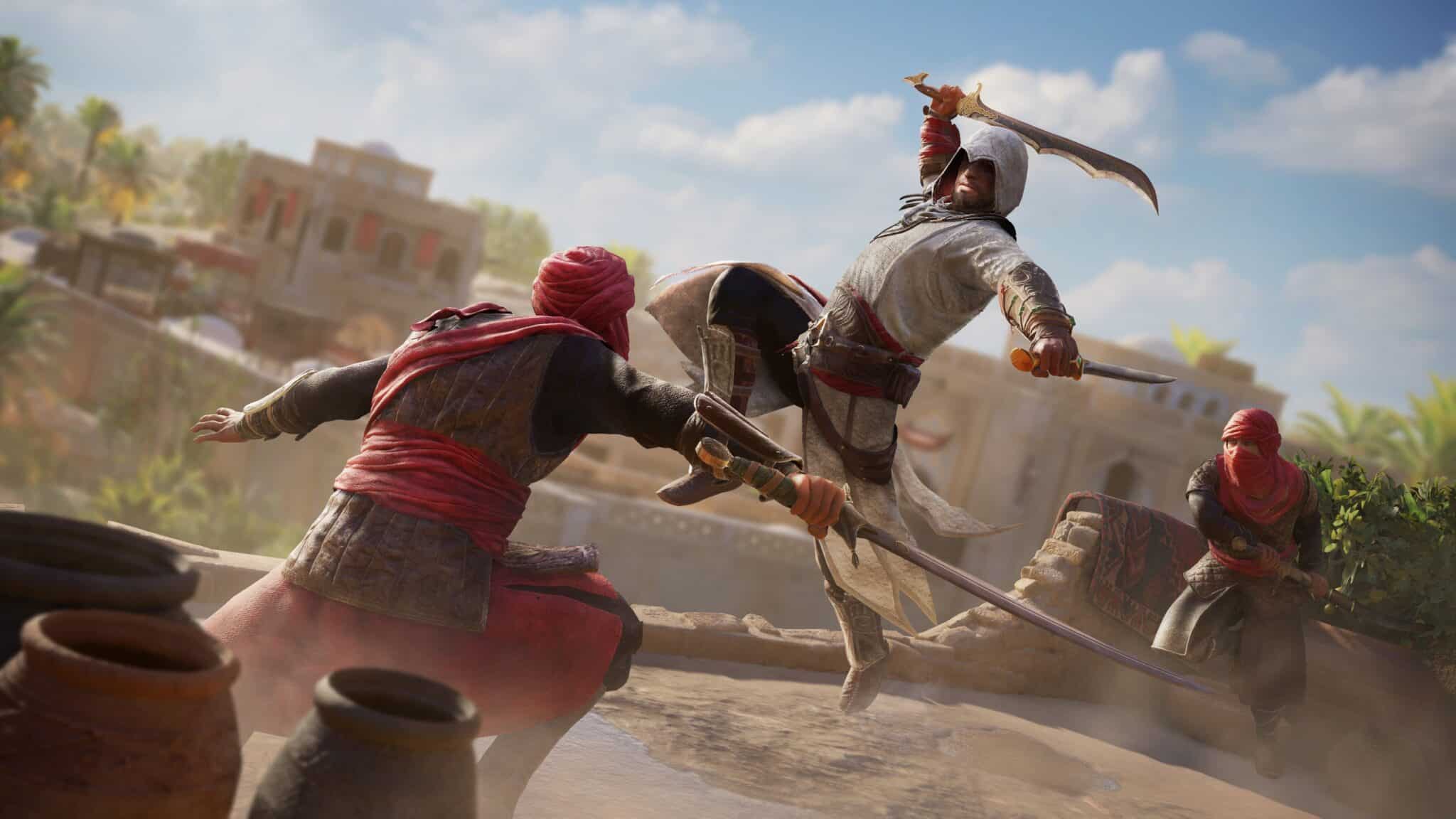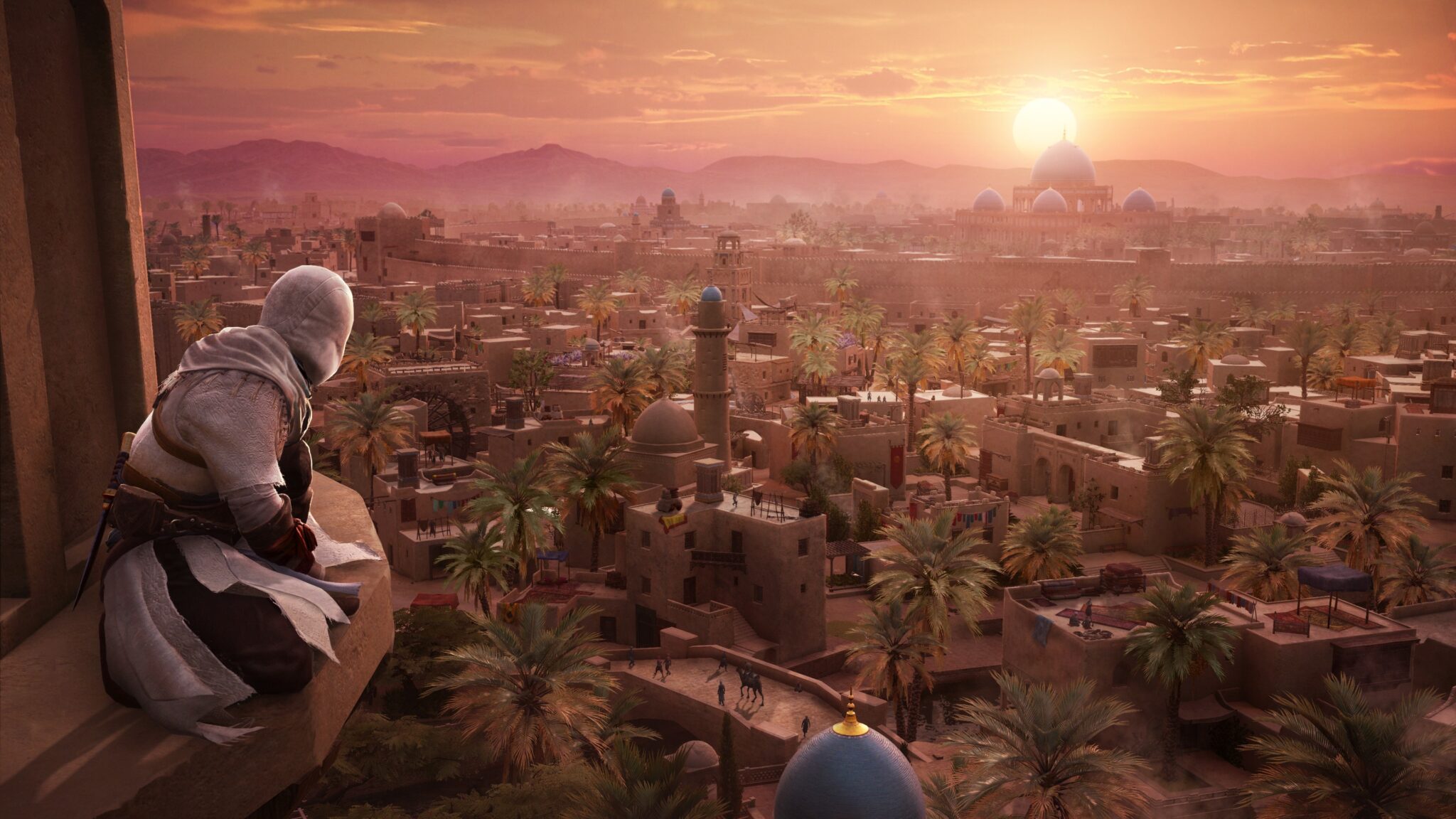Assassin’s Creed moves back closer to the series’ origins in 2023. Even Peter has to admit after the preview: Mirage looks really good!
Anyone who is in a relationship knows how important open communication is: if both parties don’t talk to each other, don’t listen to each other, then there is no hope for the future. But forgiveness is at least as important: If one of both parties messes up and apologises sincerely, then it is a sign of true love if the other forgives the other person.
Now, big game companies like Ubisoft naturally have a hard time with apologies and admissions of guilt. But sometimes it is enough to ask for forgiveness through the flower, like with Assassin’s Creed Mirage.
Because this is aimed squarely at all those fans of the series who have complained in recent years about a lack of AC feel. Who have missed classic assassin stealth. Who have felt uncomfortable in the increasingly large Open Worlds of Origins, Odyssey and Valhalla irritated by soaring damage counts, role-playing-like talent trees and mass enemy slaughter in favour of the ever-growing experience point bar.
For GlobalESportNews I was able to take a look at the action adventure game with Baghdad setting announced for 2023 in the run-up to Ubisoft Forward. I got to see more of the game than everyone else, namely a ten-minute presentation for journalists only, and was then allowed to chat with the project’s creative director for half an hour.
All this fundamentally changed my attitude towards Assassin’s Creed Mirage. Because the “open city game” developed by the 400-strong Ubisoft Bordeaux team is a step backwards in many respects – but one that could be spot on for the series. In this preview, I’ll explain why in more detail with four exciting facts from the press demo.
Table of Contents
1: A smaller world with more focus
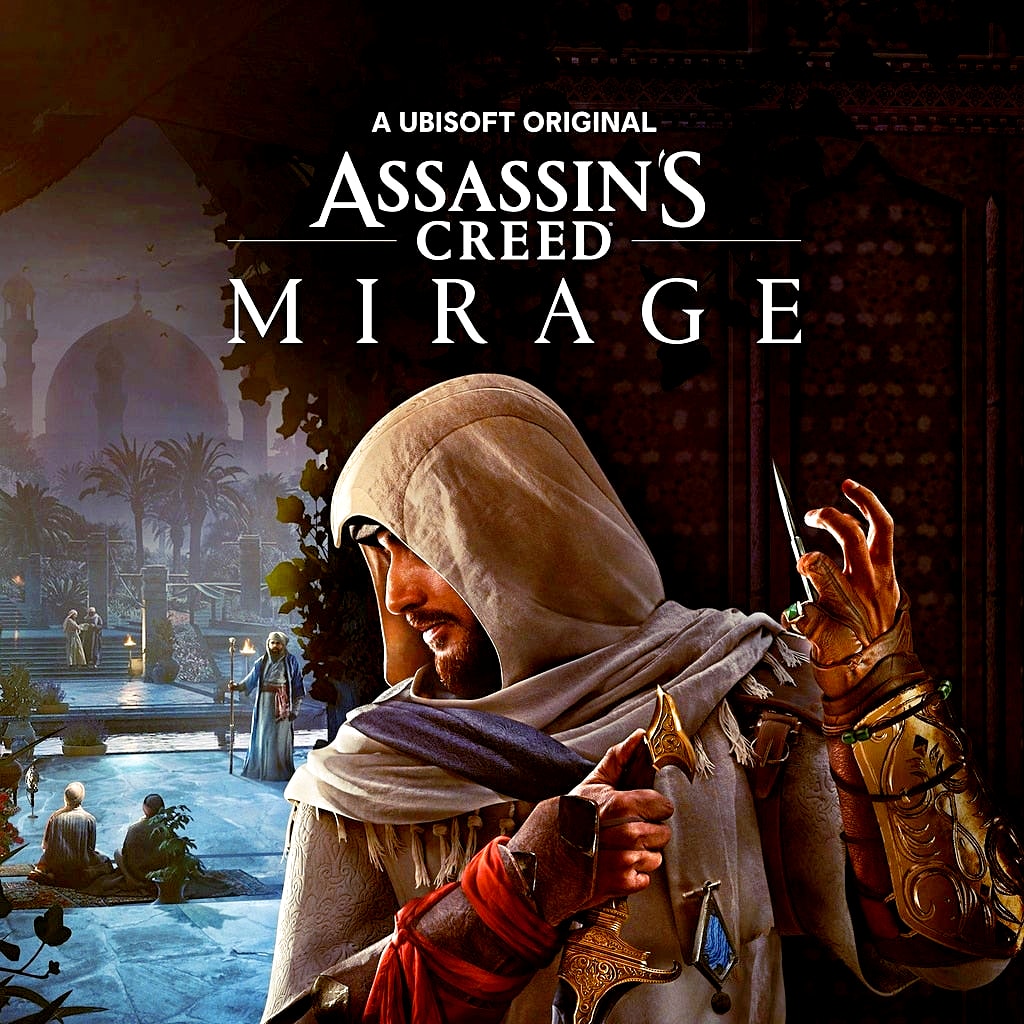
One city, four districts and a bit of surrounding countryside: this is the significantly shrunken playground you’ll be on in Mirage compared to previous parts of the series. According to creative director Stephane Boudon, the size is comparable to Assassin’s Creed Unity, and the crowds from Paris are also back. Because role-playing mechanics such as experience points have been “dramatically reduced”, the game time cannot be compared with Valhalla and the like.
Mirage concentrates strongly on the main missions and only provides occasional side missions: “There will be plenty to do,” said Boudon in the interview, “but we have significantly fewer collectibles than before.” Story is the focus, Boudon refers to it as a “linear action-adventure” like previous instalments in the series, even going so far as to claim that Mirage is not really an open-world game – but an “open-city” game.
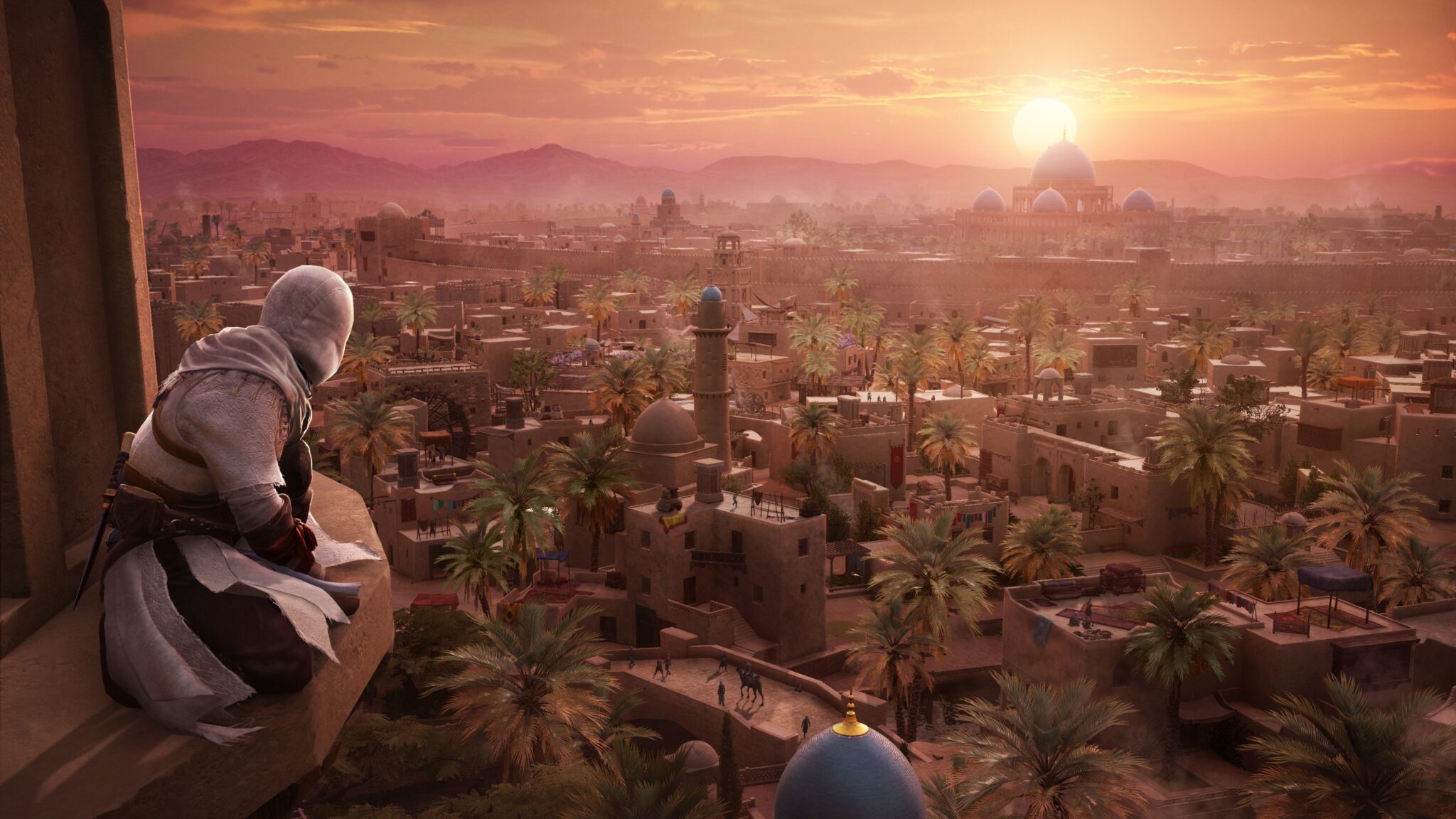
In Baghdad in the year 861 AD, you join the Hidden Ones, the forerunner organisation of the Assassins. The metropolis, which at this time was experiencing a golden age in terms of architecture, science, art and trade, is divided into four sectors, including an industrial quarter and an upper city. You can explore the surroundings with a mount, presumably there are surrounding villages and caves.
Is the smaller game world also due to the fact that Assassin’s Creed Mirage was originally planned as DLC for Valhalla? According to Creative Director Stephane Boudon, this was the case “only for a few weeks on paper”. Quickly, Ubisoft decided to expand Mirage into a full-fledged series installment, but with one crucial difference: “We don’t plan to have DLCs for Mirage,” Boudon said in the interview.
There is only said to be the previously leaked pre-order content The Forty Thieves Quest, which separately from the main story makes a few allusions to the famous stories from 1001st Night. This collection of small tasks is said to be comparable in scope and importance to the Beowulf pack for Assassin’s Creed Valhalla.
Preorder info and different versions
Those who pre-order Assassin’s Creed Mirage for 60 Euros in the Deluxe Edition will receive access to the add-on pack The Forty Thieves. The Standard Edition available at release costs 50 euros. A Collector’s Edition with a statue, printed Baghdad map and other extras costs 150 euros. Mirage will be released for PC, PlayStation 5, PS4, Xbox Series X and Xbox One.
2: Lots of fan service for the 15th anniversary
As a veteran of the series, I had to grin a time or two when watching the first trailer for Assassin’s Creed Mirage. Because there, the return of all possible features of past AC parts is nonchalantly announced.
It starts with the wooden beams, some of which stretch over alleys and marketplaces, offering parkour-loving assassins a way through the air, continues with the swinging around corners on cranes and lanterns familiar from the earlier parts and ends with the assassin’s arsenal with smoke bombs, noisemakers and throwing knives inspired by the beginnings of the series. Enemies throw incendiary grenades; you counter them by hiding on benches between passers-by with your hood pulled over your face via “social stealth”.
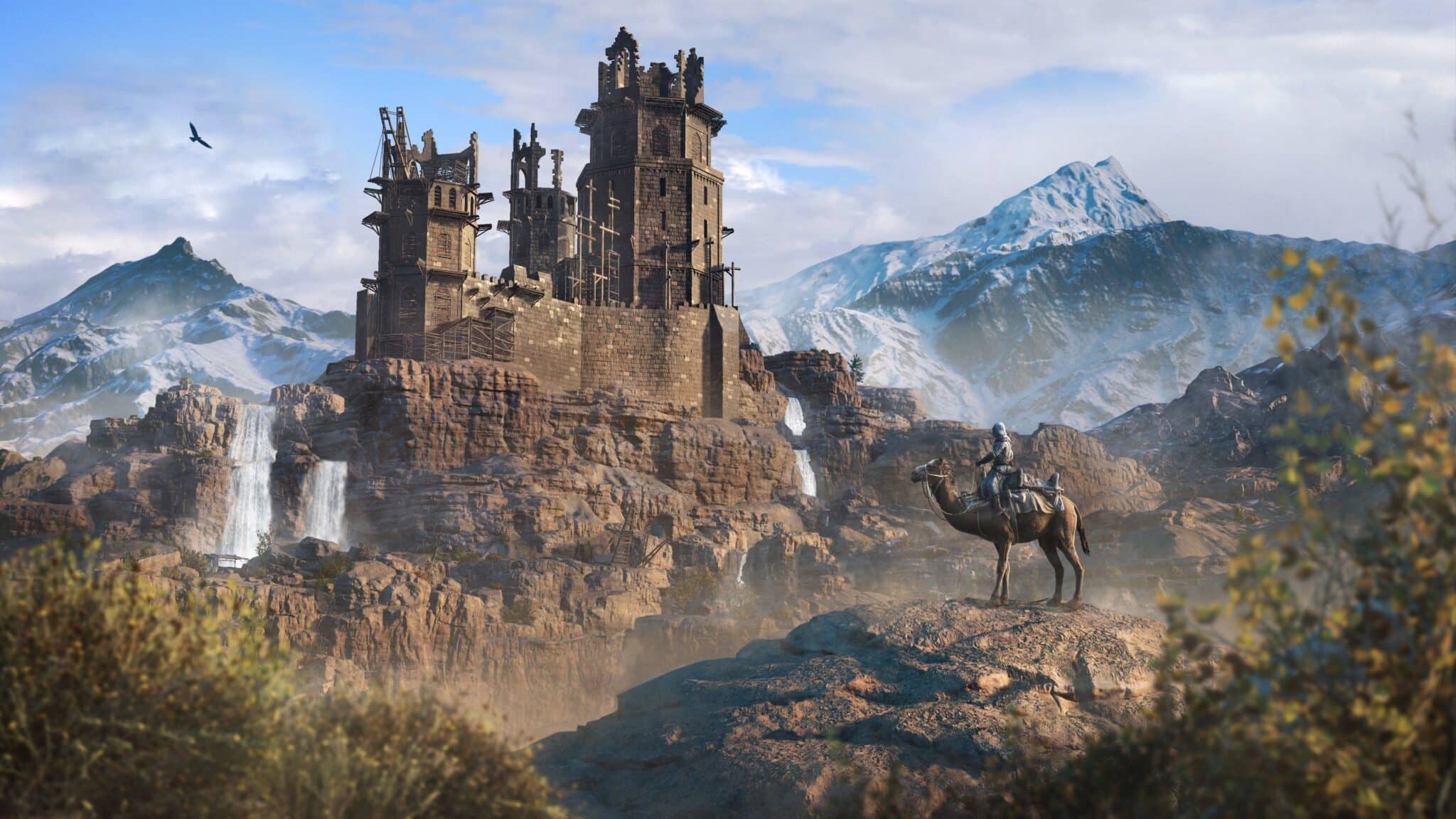
Stephane Boudon confirms in the interview that Ubisoft Bordeaux and its seven partner studios have purposefully put together a kind of best-of for Mirage here: “There are a ton of them.” The closest template was always the first Assassin’s Creed. That’s why there’s also an Assassin’s office in each of the four districts, as you still know from the first part. This serves as the starting point for the missions, where you meet your contact and plan your next steps to assassinate important targets. In the course of the game, you also return to Alamut, the Assassin headquarters still under construction at the time, where the journey with Altair began 15 years ago.
Good: Even though Mirage revives much that is familiar, the makers do not want to bring back the past completely at any price. Some elements of the earlier Assassin’s Creed games, such as the combat system, are also considered “a bit outdated” by creative director Boudon. He wants to polish up these parts and offer an optimal mix of nostalgia and modern game design.
New animations and parkour possibilities are also part of the game, among other things you can use poles at certain points to swing over wide chasms, which is particularly advantageous when changing sides of the street at airy heights. Baghdad, with its dense buildings, again promises varied climbing on the roofs.
According to Ubisoft, the speed of the parkour manoeuvres has been increased. A welcome change for all those who missed the really big cities with closely packed buildings in the last parts of the series, as they were the order of the day before Black Flag.
More Assassin’s Creed
At the Ubisoft trade show, the company announced several new games in the series:
- Assassin’s Creed: Codename Red sends you to feudal Japan with a katana and a hidden blade.
- In Assassin’s Creed: Codename Witch you are to experience the time of witch hunts in the Holy Roman Empire of the German Nation in the Middle Ages. According to insider information, the release is still far away and not expected before 2026.
- Assassin’s Creed: Codename Jade will be a Free2Play title for mobile devices set in China during the time of the Three Kingdoms.
- Assassin’s Creed Infinity is set to become an online platform where games like Red and Hex coexist. Ubisoft also says it is experimenting with multiplayer functionality for the project set in a virtual animus.
3: Sneaking is the royal road
In addition to Assassin’s Creed 1, Unity also repeatedly comes up as an inspiration for Mirage in conversation with Boudon. For example, the mission design, which uses the same black box approach as Assassin’s Creed at the time of the French Revolution (Syndicate used a similar system). According to this, the main missions of Mirage only give you the task of killing a certain villain – but you decide for yourself how to go about it.
While exploring the city districts, you come across so-called opportunities. For example, you overhear two NPCs talking about a secret passage, or you realise that this scaffolding on the street looks pretty shaky and could easily be brought down on your target. One of these opportunities leads to a particularly spectacular or clever way of carrying out the assassination. Unseen action should always be the focus. “Fighting will be more difficult,” promises creative director Stephane Boudon. “We want sneaking to always be the best option.”
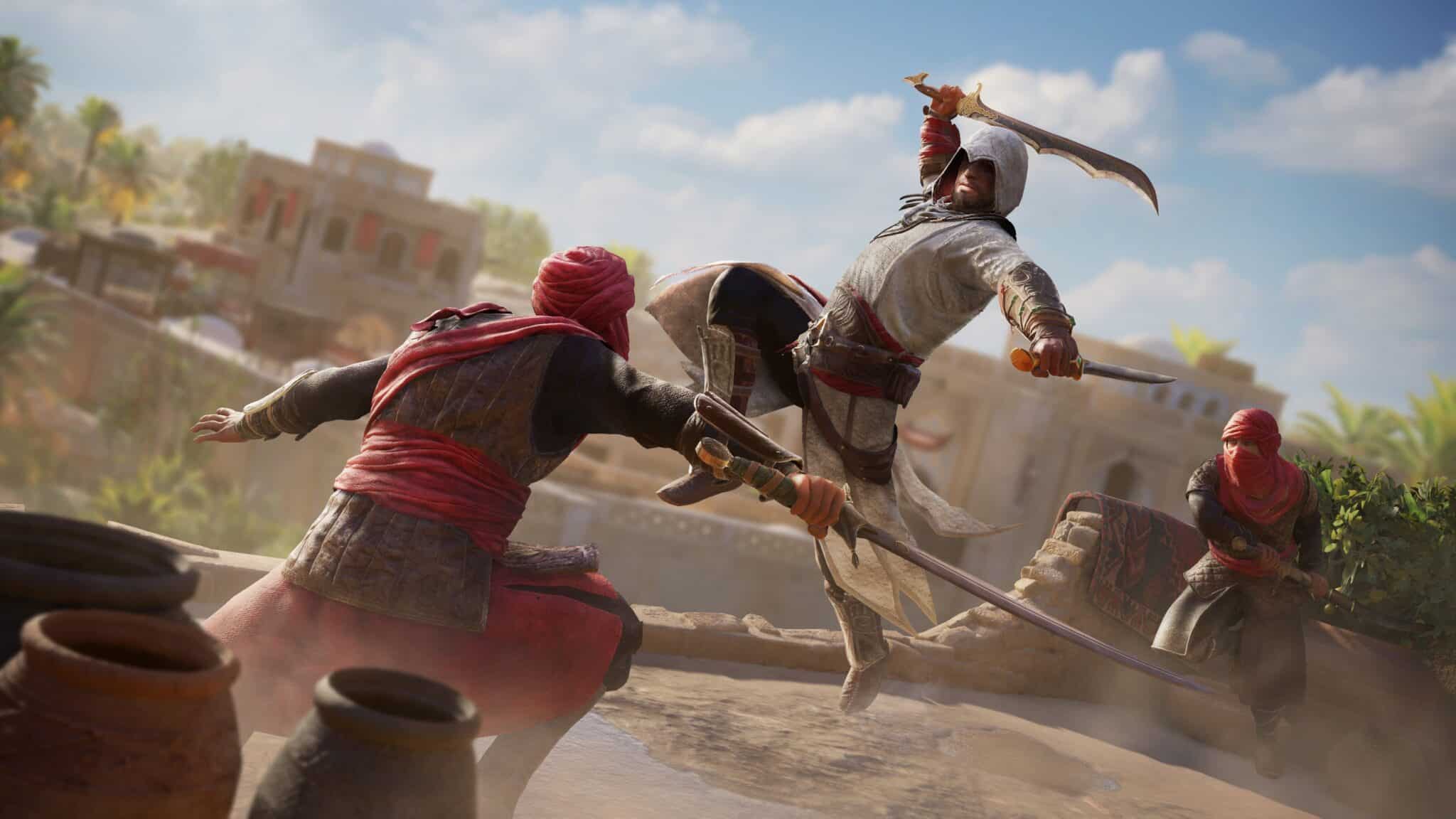
- This time there are more options to track enemy patrol routes. Borrowed from Splinter Cell: Blacklist is the option to mark multiple enemies and then perform a combo stealth kill. The camouflage and detection system has also been reworked, according to Ubisoft, and your eagle will once again mark enemies from lofty heights if desired. But beware: Special archers can shoot down your feathered friend for the first time, putting him out of action for a while. It is therefore a good idea to sweep these dangerous enemies from the rooftops before you start scouting.
Most of the time, Assassin’s Creed Mirage is a linear adventure, but you are free to explore Baghdad and the surrounding area between missions. Only sometimes do you get to choose which of several missions you tackle next. In any case, there will no longer be an overflowing quest log as in the role-playing predecessors; you will always know exactly where the main story continues. This should reduce the idle phases that sometimes occurred in the predecessors, in which players only worked on side quests for hours.
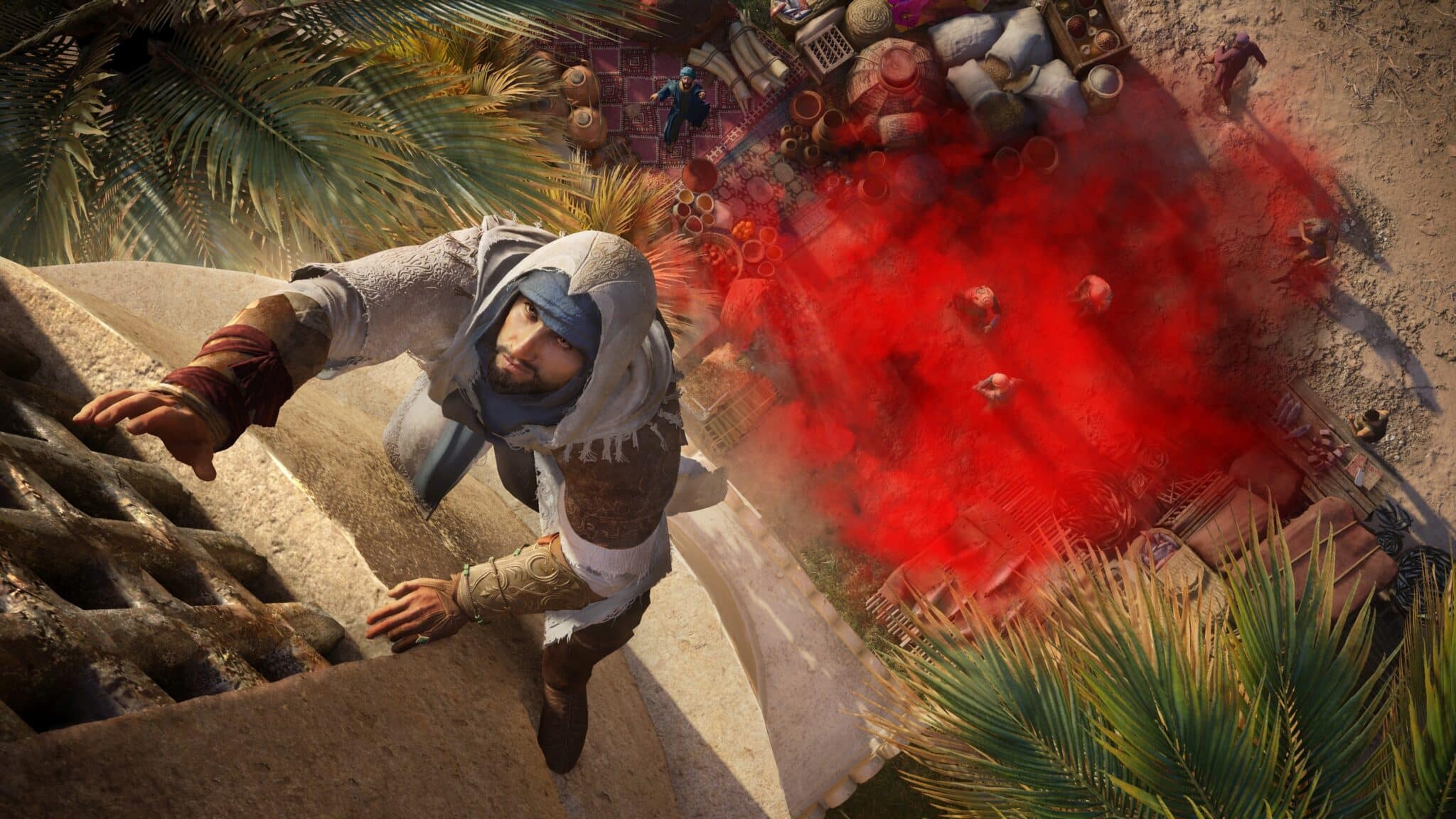
By the way, to express your personal play style, you can improve your equipment with collected resources and also choose different upgrade paths. There is no longer a role-playing game-like inventory, random loot and the constant changing of items as in Odyssey, for example, but instead the equipment is linked to the story progress. For example, you will receive new armour at fixed points in the story when your protagonist first becomes an assassin apprentice and finally a master.
4: A hero worthy of the name
One of my biggest concerns before the official launch of Assassin’s Creed Mirage was the protagonist: Basim Ibn Ishaq is undoubtedly an interesting character in the predecessor Valhalla, but not exactly a likeable one. But what little I have learned about the story and characters of Mirage since then makes me feel much more positive about the future.
At the beginning of Mirage, Basim is 20 years younger than when he appeared in Valhalla. He ekes out a living as a petty thief until one day he comes to the attention of the Assassin leader Roshan. The 50-year-old warrior, voiced by Shohreh Aghdashloo (best known as Earth President Chrisjen Avasarala from “The Expanse”), takes him under her wing as a mentor, and the player subsequently accompanies Basim on his rise as he murders villains from the Order of Elders (the early Templars).
Small hints in the trailer and statements by the developers suggest that Basim (of course!) carries a difficult past with him, including probably a tragic love story. And finally, the final act of the first trailer promises that we will witness through visions how Loki’s influence increasingly affects Basim’s psyche until he finally becomes the person I came to know and hate in Valhalla.
All this is no guarantee that it will be fun to sympathise with the anti-hero of Assassin’s Creed Mirage. But it’s at least a good indication that the new instalment in the series could strike the right note in terms of open communication and forgiveness from fans.
Editorial conclusion
Without exaggeration, there has probably never been a preview event that I went into with as much bias and negativity as the one for Assassin’s Creed Mirage. According to my column last week, Ubisoft’s PR staff had beads of sweat on their foreheads when they found out that I would be watching the presentation on the future of Assassin’s Creed, which I said I had never wanted to see before. And then what was shown actually picked me up throughout.
Assassin’s Creed Mirage looks like a very smart attempt to get players who are fed up with the series excited about AC again with a lot of nostalgia in time for the 15th anniversary. From my personal experience so far I can say: it works! I was pleasantly surprised at how many small details seemed immediately familiar, especially from the very first part of the series. The more I think about it, the better I also like the approach of giving players a little open-world breather with the compact Baghdad adventure before the usual giant worlds in Japan and Central Europe are waiting to be explored with the new series installments Red and Witch.
But the new, old approach with its focus on the story also has a catch, of course: it is precisely this story that must captivate me much more in Mirage than the plot vest of Valhalla that flutters unsteadily back and forth in the side quest storm! Only when Basim’s transformation from sympathetic thief to calculating murderer with Loki visions is written in a comprehensible and exciting way does Ubisoft’s plan work. Until Mirage provides proof of this, it remains only a plan for now. Albeit a damn good one.

